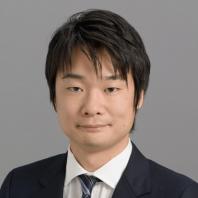![]()
![]()
Research Support Office Research Advancement Division. Tokyo University of Agriculture and Technology
| TEL | +81-42-367-5944 |
|---|---|
| FAX | +81-42-367-5946 |
This program is supported by MEXT’s scientific technology human resource development fee grant, "Program to Disseminate Tenure Tracking System".
Home > Introduction of our tenure-track faculties > Kurashina Yuta

Kurashina Yuta

| Affiliation | Institute of Engineering |
|---|---|
| Division | Division of Advanced Mechanical Systems Engineering |
| Research field | Soft robotics, Biomedical device |
| Keyword(S) | Soft matter, Ultrasound, Micro/nano fabrication |
| Url | https://web.tuat.ac.jp/~kurashina |
| Research experience | ・Apr.2017–Jun.2018:Keio University, Faculty of Science and Engineering, Dept. of Mechanical Engineering, Research Associate |
|---|---|
| Educational background | ・Mar. 2012:B. S. (Eng.) Faculty of Science and Engineering, Keio University |
| Awards | * The latest information is shown at the member's website. |
| Selected papers and publications | * The latest information is shown at the member's website. |
To realize cutting-edge medical treatments such as drug delivery systems (DDS), regenerative medicine, and gene therapy, advanced engineering technology is required. Unlike conventional inorganic manufacturing, organic fabrication that involves the fusion of cells and tissues is required in the development of products to support such medical treatments.
Therefore, we are conducting research to develop soft robots that work in vivo, cellular tissues that contribute to regenerative medicine and drug discovery research, and devices that support medical treatment and cell culture. These research fields require materials and driving sources that are friendly to the body. Based on micro/nano engineering using MEMS and machining and mechanical mechanics using ultrasound, we are devising multi-scale "soft" robots from nano to macro scale. Specifically, we are researching a micro-sized hydrogel robot for simultaneous in vivo sensing and drug release (upper left in the figure), needle-less transdermal administration of nano-drugs using ultrasound (upper right in the figure), three-dimensional macroscopic cellular tissue constructed with hydrogel (lower left in the figure), and cell manipulation using ultrasound (lower right in the figure). Through such innovative fabrication, our goal is to establish new platforms for cutting-edge medical treatment, such as DDS, tissue engineering, and regenerative medicine.
The details of each project are as follows
https://web.tuat.ac.jp/~kurashina/research/
By providing young researchers with a place to perform responsible research activities as an associate professor, I am able to prepare an environment which allows me to devote myself to research mainly on my own ideas. In addition, as a tenure-track faculty, I can keep myself motivated by setting goals for my research. Also, the faculty members support me very kindly, and I am able to enjoy my research activities every day. I will do my best.
My research field is multidisciplinary research in the fields of mechanical engineering, materials science, and life science. Since I am involved in research that integrates multiple fields, I would like to actively interact with researchers in various fields more than ever before to develop a variety of research. I hope that this will lead to new innovations that are yet to be seen.